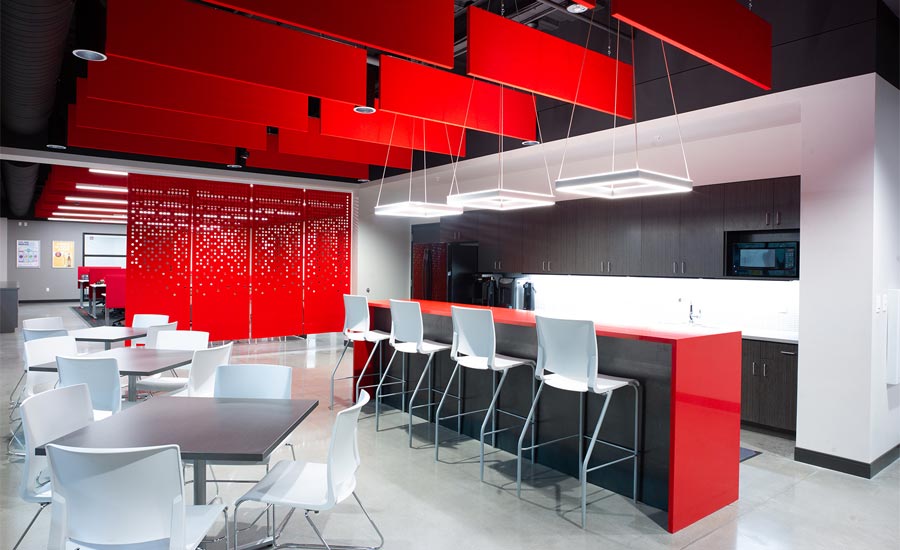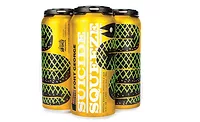Sustainable facilities benefit environment, beverage operations
Solar panels among most popular sustainable solution for facilities

Image courtesy of HDA Architects
The mutualistic relationship between a rhinoceros and an oxpecker is one of nature’s prime examples of two species benefiting from each other’s existence. The oxpecker lands on the rhino and consumes insects and parasites that dwell on the pachyderm’s skin, offering necessary pest control, while the bird has found an easy meal.
In beverage warehouses, the demand for more sustainable operations has prompted distributors and manufacturers to incorporate practices that are less taxing to the environment. Yet, experts note that when done properly, sustainable facilities can go beyond supporting the earth by supporting the comfort of facility personnel and even lowering costs.
“Beverage operations are looking to incorporate more sustainable options to lower operational expenses and to provide a better performing building for their employees and guests,” says Patrick Holleran, senior principal at HDA Architects, St. Louis. “When systems are working efficiently and properly, it not only keeps costs low but also provides a comfortable environment for staff to be in throughout the day. Owners are increasingly looking for ways to help the environment and responsibly build at the same time, too.”
For existing facilities, Holleran notes that decision-makers can implement various initial steps to improve sustainability performance.
“Retrofitting fluorescent light fixtures to LED and installing lighting control systems are an excellent way to easily enhance sustainability and efficiency,” he says. “Analyzing existing HVAC systems, both equipment and controls, to determine their efficiency can be particularly helpful in increasing sustainability, too.”
Holleran adds that accurate evaluation of these systems allows operations managers to best determine whether to maintain or replace existing systems with higher performing solutions.
Another avenue that distributors and manufacturers can invest in for sustainable improvements is the use of solar technology.
“By far the most popular sustainability initiative HDA Architects continues to see with our beverage clients across the U.S. is the use of solar panels,” says Josh Goodman, AIA and principal at HDA Architects. “Due to the large roof area of most warehouses, solar is incredibly effective and well-suited to offset costs while enhancing sustainability.”
Yet, updating existing facilities is not the only way that decision-makers are looking to solidifying their commitment to sustainable practices. Operations looking to invest in new facilities can implement a bevy of sustainable solutions from the onset.

Image courtesy of HDA Architects
“With new facility builds, owners have a wealth of opportunities to implement sustainable measures from the start,” Goodman explains. “Considering the site itself, three elements are particularly helpful to include. Proper onsite stormwater management, the use of concrete paving in lieu of asphalt, and building orientation can all make a big impact.
“With the expansive paved areas required for warehousing, the use of concrete provides an efficient and long-term solution while limiting waste and petroleum-based materials,” he continues. “Locating the building itself in the best possible way on the site can help reduce costs, along with appropriate glass selection and shading devices.”
In terms of exteriors, Goodman calls attention to durable, insulated concrete tilt-up panels, which are deemed energy efficient and recyclable. He also notes the importance of designing a facility’s roof system based on their region. “For example, not all buildings benefit from white roofs,” he says.
When it comes to the interior, alternative energy solutions and energy efficiency models are key for new facility builds.
“Moving to the interior, using energy efficient HVAC systems and alternative energy methods (geothermal, ice storage, solar, etc.) are a must for new builds to keep sustainability at the forefront,” Goodman says. “The use of HVLS fans and vertical dock levelers are also excellent selections. LED lighting, lighting controls and building management systems are essential to green practices.”
But whether a wholesaler or manufacturer is updating an existing facility or building a new one, it is important for them to know the state or federal incentives that are available to them.
“There are many local and state incentives available to beverage operations facilities when considering sustainable initiatives,” Holleran says. “HDA has assisted dozens of beverage wholesalers in pursuing incentives and helping owners plan accordingly. While many state and local governments have programs for implementing sustainable practices, it’s important to note that some incentives offset upfront costs, while others are distributed over a number of years. Working with a qualified design team can help the owner maximize their savings.”
Looking for a reprint of this article?
From high-res PDFs to custom plaques, order your copy today!







